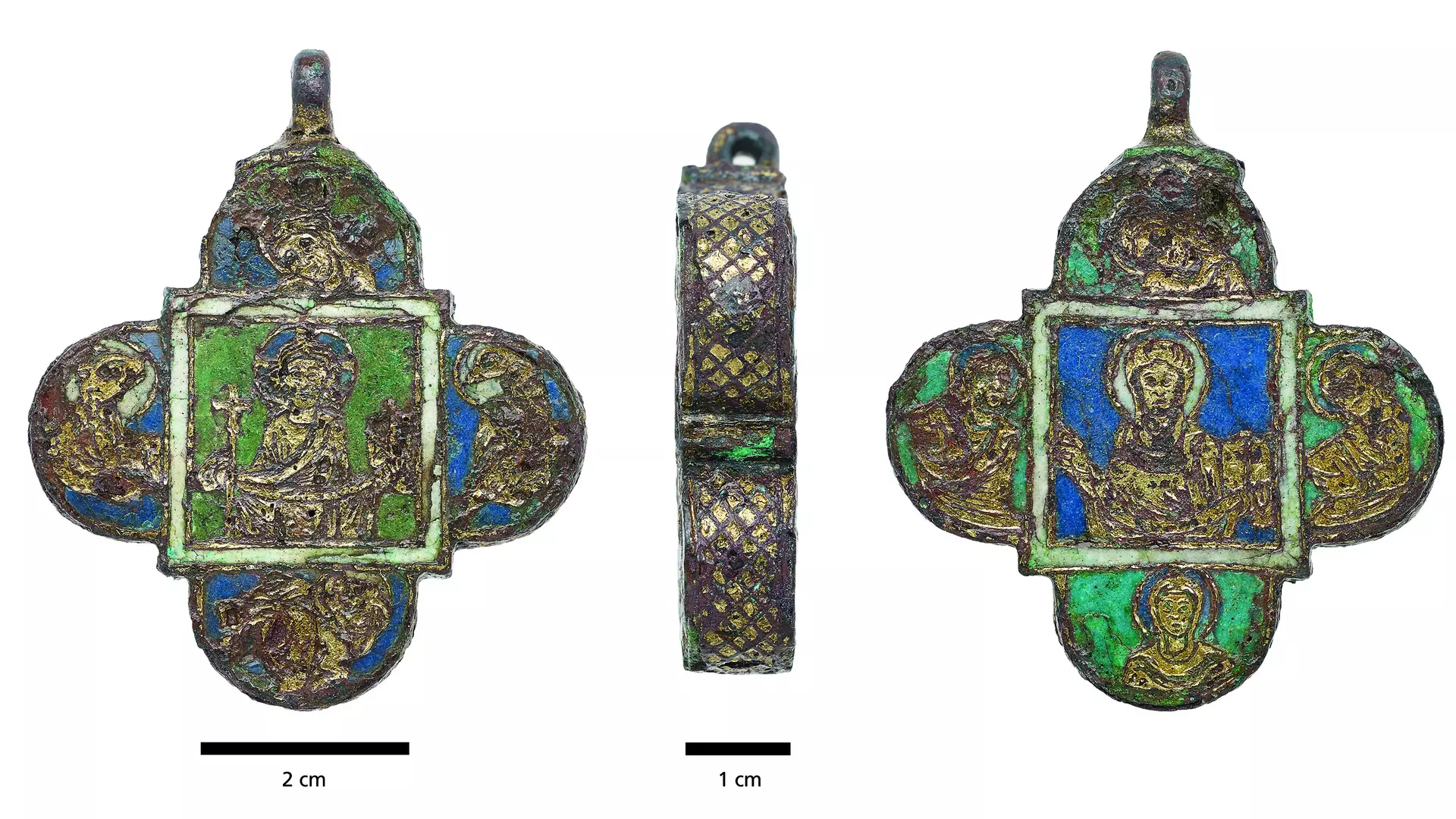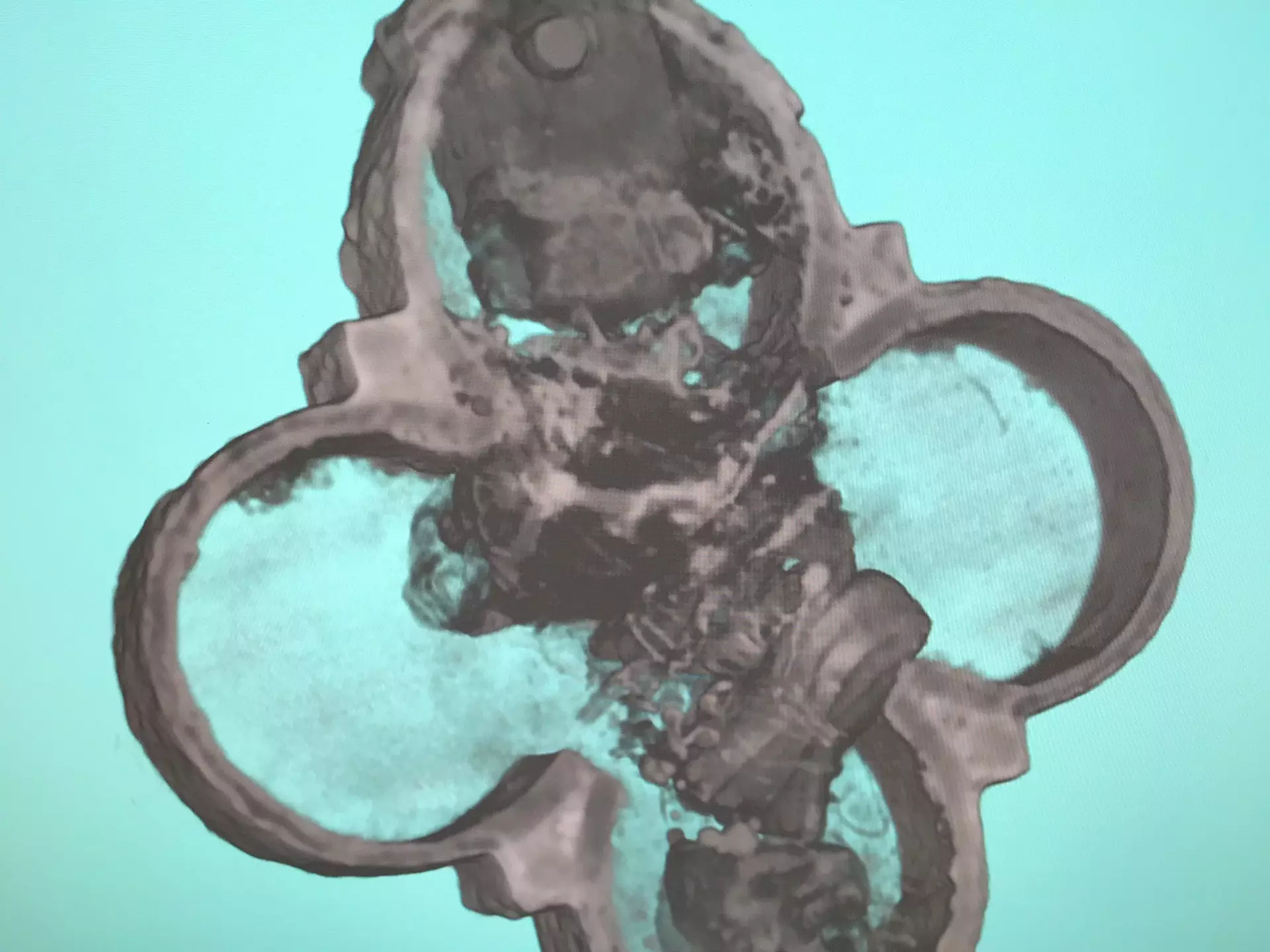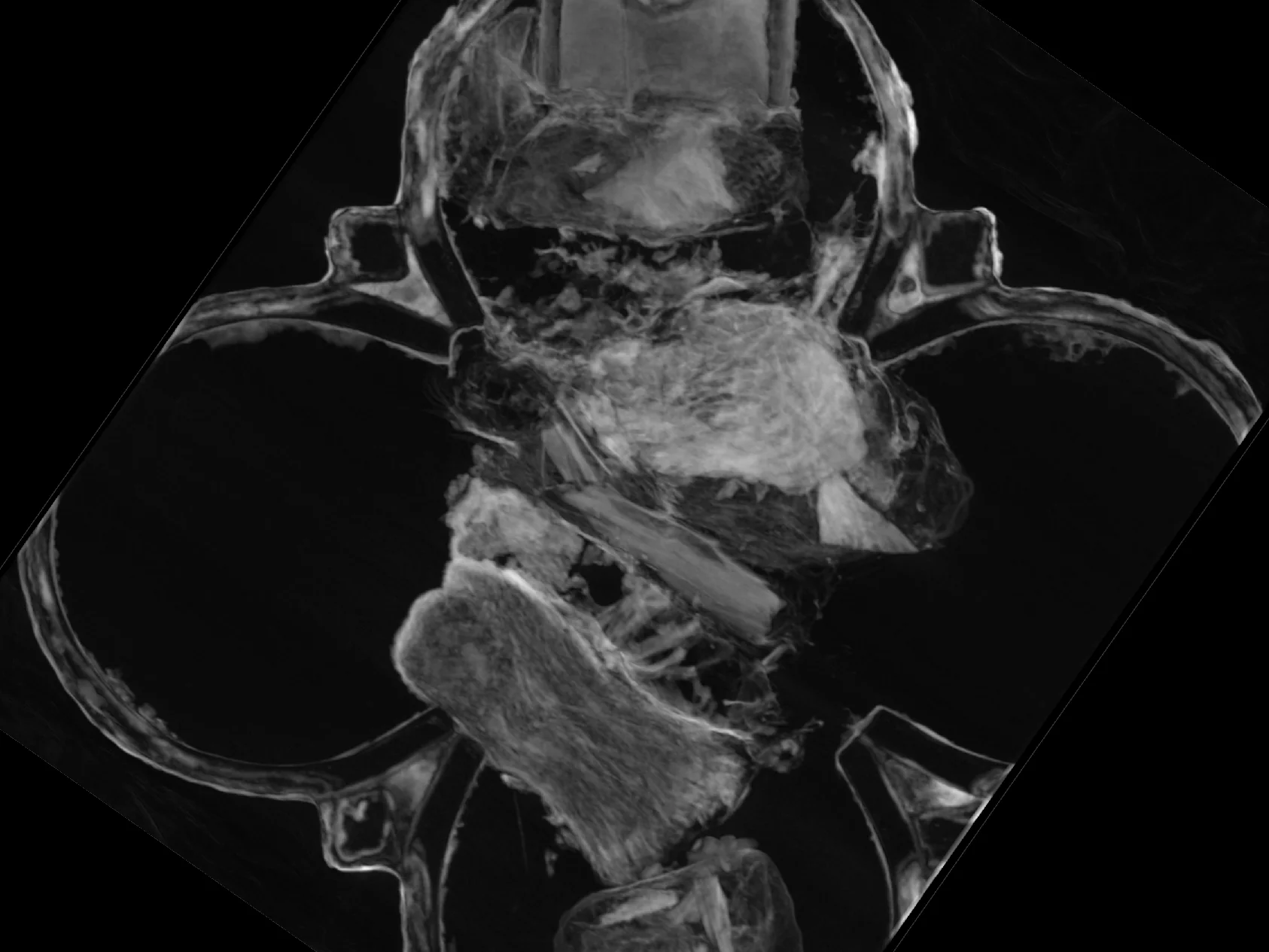High-Tech Tools Offer a Glimpse Into a Medieval Reliquary
An interdisciplinary research team led by the Leibniz Center for Archeology (LEIZA) has revealed the secret of a gold-plated pendant that was found in 2008 in a medieval rubbish pit in the old town of Mainz.
Thanks to non-destructive investigations at the research neutron source Heinz Maier-Leibnitz (FRM II) of the Technical University of Munich (TUM), the researchers were able to locate the smallest bone splinters inside the object, which are probably relics.

Analysis of the tomography and Prompt Gamma Activation Analysis (PGAA) with neutrons revealed five individual packets made of silk and linen – bone splinters were packed in each. “Neutron non-destructive testing was particularly helpful because we couldn’t just open the trailer and look inside.
The object and above all the locking mechanism are severely damaged by centuries of corrosion, and opening it would mean destroying it irrevocably,” explains restorer Matthias Heinzel from LEIZA.
During the restoration, Heinzel discovered a cord fragment in the suspension eyelet which, on closer examination, was identified as silk. “This is the first evidence that such pendants may have been worn around the neck on a silk cord.
Using neutron tomography at the TUM, we were also able to measure the thread thickness and thread spacing of the textiles on the inside,” adds the restorer.
Neutron analysis makes organic substances visible
In 500 hours of work, Heinzel freed the found object from corrosion deposits. Initial investigations showed that the pendant, which is about six centimeters high and wide and one centimeter thick, was probably a storage container for relics.
Since the organic content of the object was not recognizable on the first X-ray images, the investigation using neutrons from the FRM II was used: Dr. Burkhard Schillinger from TUM conducted the ANTARES instrument performed a neutron tomography, which made the individual textile packages with the bone splinters inside visible. Unlike X-rays, the neutrons can penetrate metals and make organic substances visible.
The researchers determined individual elements of the sample by using neutrons to excite them to emit characteristic gamma radiation during the PGAA.
“It is not possible to find out whether the bones belong to saints and which saints the bone splinters can be assigned to. A strip of parchment with the name of the saint is usually attached to a relic parcel. In this case, unfortunately, we cannot see it.
As an archaeological research institute of the Leibniz Association, we see it as our task to preserve the historical authenticity of the object for posterity in the best possible way and use the modern possibilities of non-destructive examination at the Technical University of Munich,” explains Heinzel.
Only three other reliquaries of this type, called phylactery, are known so far. Phylacterium translates from Greek as means of preservation or protection. Their owners wore them on their bodies, usually around their necks.
On the outside, the gilded copper pendant is enameled with images of Jesus, the four evangelists, Mary and four female saints.
The researchers date it to the late 12th century and assign it to a workshop in Hildesheim, Lower Saxony. The find is in the possession of the General Directorate of Cultural Heritage, Directorate of State Archeology Mainz and can be viewed until further notice in the medieval exhibition “AUREA MAGONTIA – Mainz in the Middle Ages” of the State Museum Mainz.




